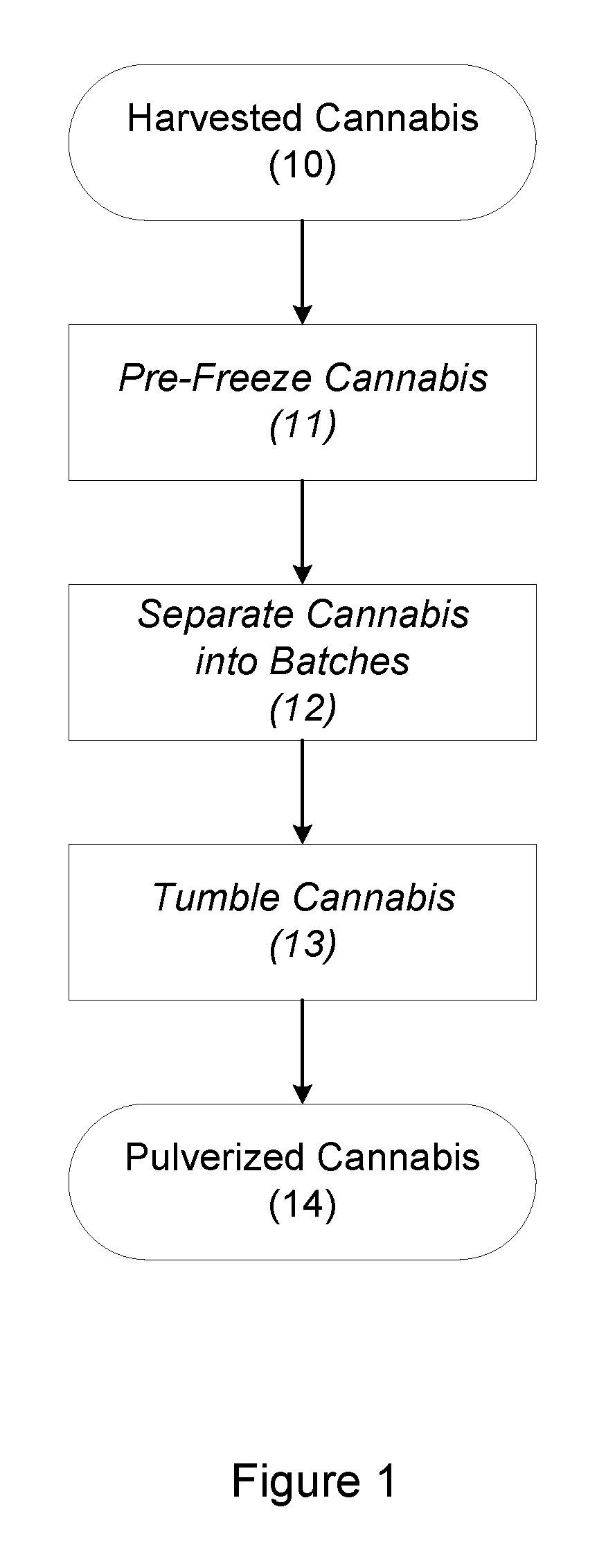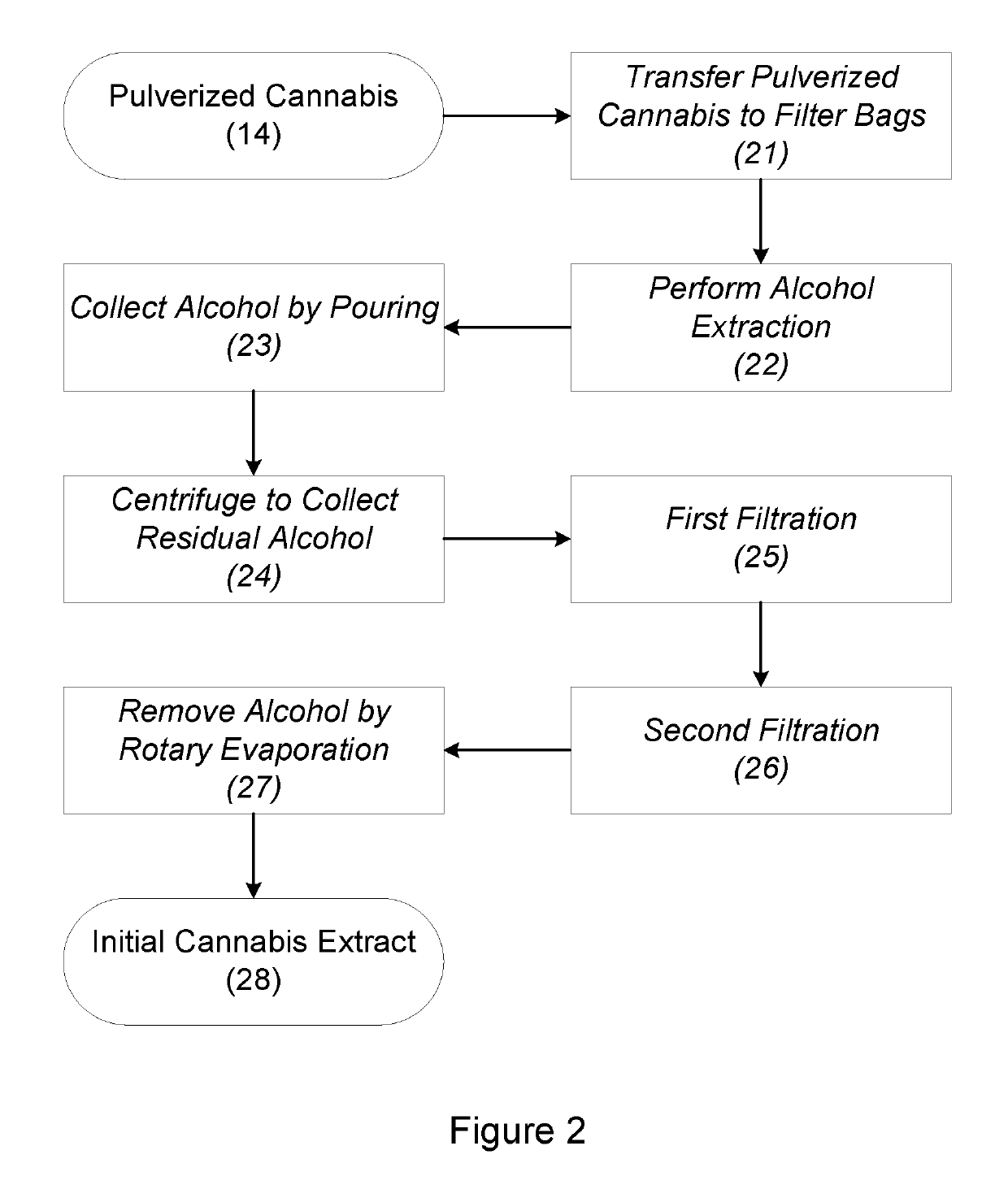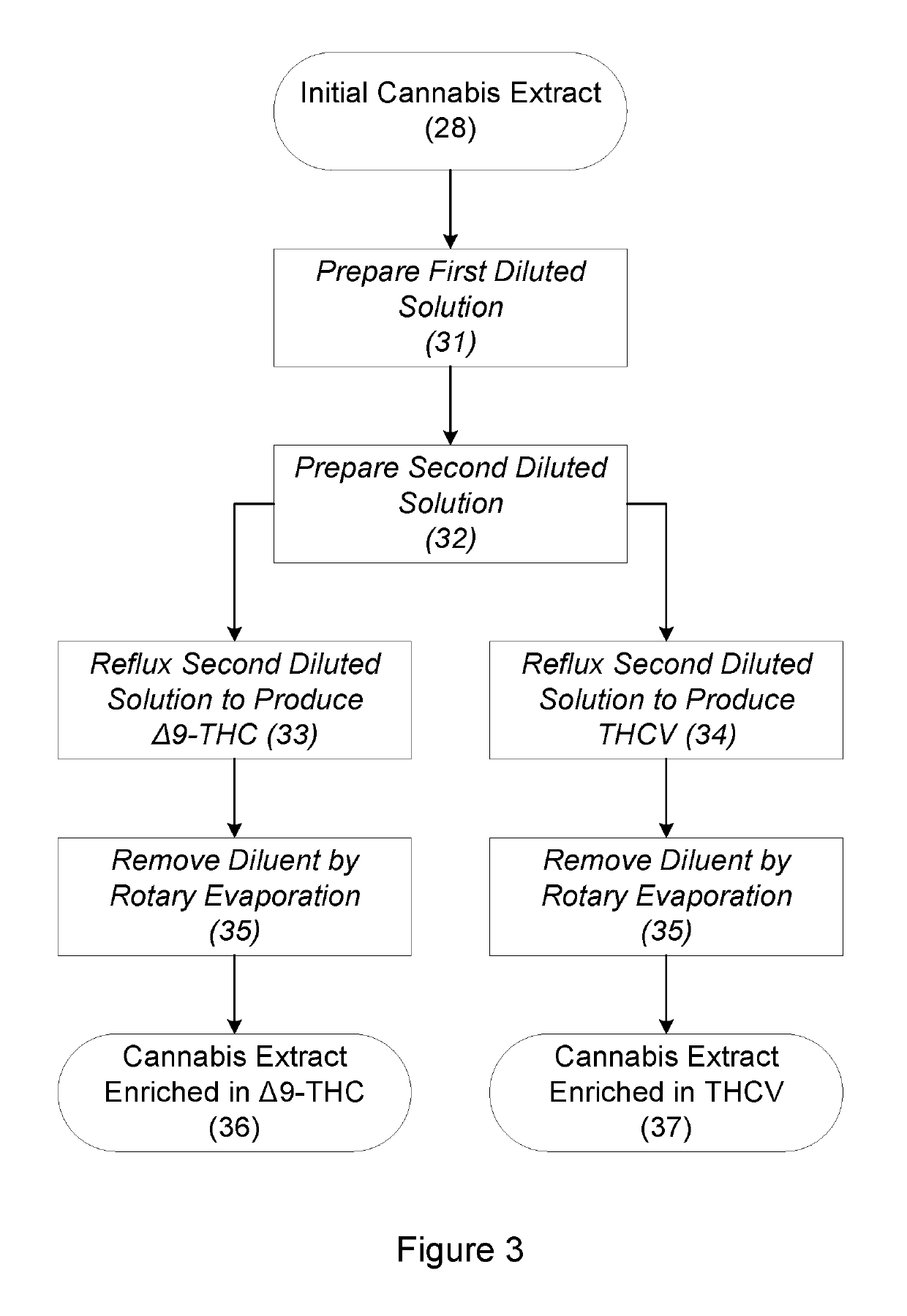Producing cannabis extracts via selective decarboxylation
a technology of selective decarboxylation and cannabis extract, which is applied in the direction of solvent extraction, plant/algae/fungi/lichens ingredients, separation processes, etc., can solve the problems of loss of desirable volatile compounds, such as caryophyllene and other terpenes
- Summary
- Abstract
- Description
- Claims
- Application Information
AI Technical Summary
Benefits of technology
Problems solved by technology
Method used
Image
Examples
Embodiment Construction
[0010]The present invention is a process that includes several stages, which are described below as Stages 1-2, 3A-3C, and 4. Where the process refers to the use of “alcohol,” a solution containing at least 99% ethanol by volume or at least 99% isopropyl alcohol by volume is preferred although concentrations as low as about 95% alcohol can be used Specifically, “ethyl alcohol 200 proof” or “99.9% isopropyl alcohol” supplied by Green Wood Cleaning Products, Inc., of Hollister, Calif., may be used.
[0011]Stage 1: Cryogenic Grinding
[0012]Referring to FIG. 1, cryogenic grinding is used to convert a quantity of harvested cannabis 10 into pulverized cannabis 14. The harvested cannabis 10, which may be fresh or cured, should be pre-frozen (step 11) at a temperature of about −29° C. (−20° F.) prior to processing. Cryogenic grinding should take place at an ambient temperature of 0-10° C. (32-50° F.). An ambient temperature of 0° C. (32° F.) is preferable for minimizing the loss of compounds f...
PUM
 Login to View More
Login to View More Abstract
Description
Claims
Application Information
 Login to View More
Login to View More - R&D
- Intellectual Property
- Life Sciences
- Materials
- Tech Scout
- Unparalleled Data Quality
- Higher Quality Content
- 60% Fewer Hallucinations
Browse by: Latest US Patents, China's latest patents, Technical Efficacy Thesaurus, Application Domain, Technology Topic, Popular Technical Reports.
© 2025 PatSnap. All rights reserved.Legal|Privacy policy|Modern Slavery Act Transparency Statement|Sitemap|About US| Contact US: help@patsnap.com



